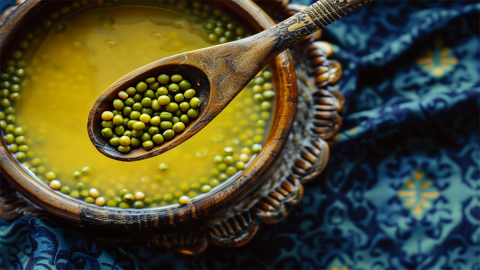How to Determine if Mung Bean Soup is Still Safe to Eat
In general, you can judge whether mung bean soup is still edible by checking its odor, color, appearance, taste, and temperature. The specific methods are as follows:

1. Smell the odor
Freshly prepared mung bean soup has a naturally fragrant and slightly sweet smell, which is fresh and pleasant. If you detect a sour or acidic smell, an alcoholic odor, or any other pungent or unusual smell, the mung bean soup may have been contaminated by microorganisms, resulting in acidic or other harmful metabolic substances, and should not be consumed.
2. Check the color
Normal mung bean soup is typically a clear green or yellowish green color. If the color becomes dark, blackish, cloudy, or shows obvious discoloration, it may have undergone oxidation or been contaminated by bacteria, mold, or other microorganisms, leading to changes in quality. It is not recommended for consumption.
3. Observe the appearance
Examine whether the mung beans are intact and whether there is any softening, disintegration, or abnormal spots. If the mung beans are severely softened, lose their shape, or have white or black mold spots on the surface, they may have spoiled. Also, check if there are floating particles, flocculent substances, or sediment in the soup.
4. Taste it
You can take a small amount of mung bean soup with a clean spoon and taste it. Normal mung bean soup has a sweet flavor, smooth texture, and natural mung bean aroma. If it tastes sour, bitter, astringent, or has any other unusual taste, such as metallic or rotten odors, it indicates spoilage, and the soup should not be consumed.
5. Check the temperature
If the mung bean soup has been kept in a high-temperature environment—for example, left at room temperature for more than 2 hours in summer—even if there are no obvious changes in appearance or smell, it may have developed a large amount of bacteria and should not be consumed. If refrigerated, it should be carefully evaluated if stored for more than 2 days.
It is best to consume mung bean soup soon after preparation and avoid leaving it for extended periods. If storage is necessary, seal it in a clean container and refrigerate. Avoid storing hot food in plastic containers to prevent the release of harmful substances. If any signs of spoilage are detected in the mung bean soup, for health reasons, it should be discarded immediately and a fresh batch should be prepared.




